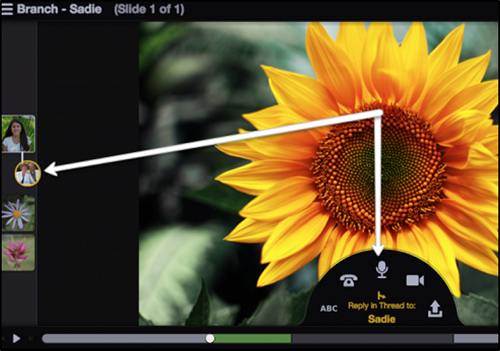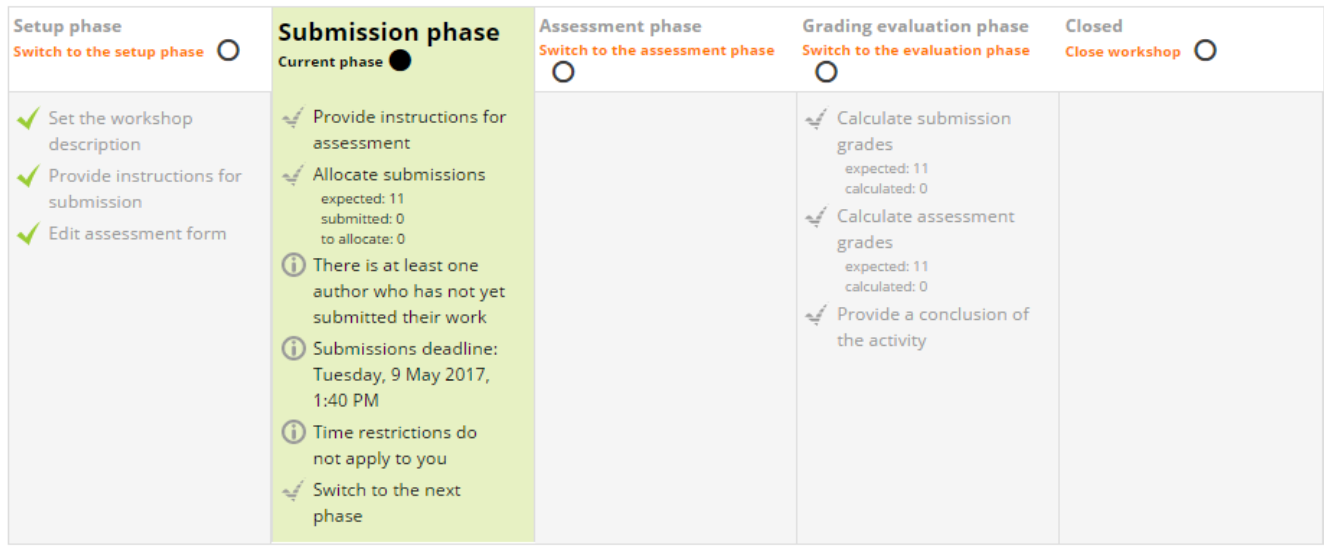Providing Effective Feedback
Instructor and peer feedback have a profound effect on the quality of student learning. When teaching online, it is important to foster both learner-instructor interaction and learner-learner interaction (Quality Matters, 2023). NC State offers numerous options to enhance feedback for the online learner.
How to Get Started
Step 1: Review learning objectives and assignments and decide which need more feedback from you, and which would benefit from peer review.
Step 2: Because a plethora of instructor- and peer-feedback mechanisms are available for online courses, explore different options to find the best fit for your content. NC State provides multiple features that allow different types of feedback:
| Tool | Instructor Feedback | Peer Feedback |
|---|---|---|
| Yellowdig | ✔ | ✔ |
| PlayPosit | ✔ | |
| Perusall | ✔ | ✔ |
| Moodle Assignment | ✔ | |
| Moodle Chat | ✔ | ✔ |
| Zoom | ✔ | ✔ |
| Moodle Forum | ✔ | ✔ |
| Moodle Quiz | ✔ | |
| Moodle Workshop | ✔ | ✔ |
| Google Workspace | ✔ | ✔ |
| VoiceThread | ✔ | ✔ |
Step 3: Prepare students for when they should expect feedback from you; also, communicate how important peer feedback is for your course. This should be mentioned in the syllabus and highlighted in the “Getting Started” section of the course.
Step 4: Create a screencast that illustrates how students are to go about finding grades and feedback in your course.
Best Practices
- Show students an example of an assignment that became more thoughtful and polished as a result of peer and instructor feedback.
- Although feedback from instructors and peers is highly useful for students, opportunities for self-quizzing are also important to help students track their learning progress (Quality Matters, 2023).
- There are myriad options for student interaction through the Forum feature–see Discussion Forum Best Practices.
- If an assignment is to be peer-reviewed, make it known up front before students begin working on it.
- When providing feedback for written projects, students typically prefer rubrics with ratings and accompanying comments. Note what they did well and how they can improve next time (Smith, 2008).
- Feedback comments that do not help improve learning include those that are too vague, lack guidance, focus on the negative, or are unrelated to assessment criteria (Weaver, 2006).
Examples
- VoiceThread supports highly interactive peer and instructor feedback through audio, video, text, and “doodling” on an image or video.

- Moodle’s Workshop activity supports peer assessment, and allows students to receive two grades: one for their own work, and another for assessing a peer’s work.

- Google Workspace: Peers and instructors can provide feedback through the comment feature in Google Docs, or through an instructor-created Google Form that includes assignment criteria to guide students’ focus.

Resources
- DELTA Teaching Resources. (2024). Customize learning experiences for students: Adaptive and personalized pathways. Retrieved from https://teaching-resources.delta.ncsu.edu/customize-learning-experiences/
- DELTA Knowledge Base. (2024). Using the PeerWork activity in Moodle. Retrieved from https://ncsu.service-now.com/delta?id=kb_article_ml&sys_id=06b0406847f04e148ef587c9516d4381
- DuPont, P. (2015). 40+ Google Docs tips to become a power user. Retrieved from https://zapier.com/blog/google-docs-tips/
- Moodle. (2023). Workshop Activity. Retrieved from https://docs.moodle.org/403/en/Workshop_activity
- Quality Matters. (2023). Specific Review Standards from the QM Higher Education Rubric, Seventh Edition. Retrieved from https://www.qualitymatters.org/sites/default/files/PDFs/StandardsfromtheQMHigherEducationRubric.pdf
- Smith, L. J. (2008). Grading written projects: What approaches do students find most helpful? Journal of Education for Business, 83(6), 325-330.
- Sunflower [Online image]. (2016). Retrieved from https://cca.voicethread.com/blog/
- Weaver, M. (2006). Do students value feedback? Student perceptions of tutors’ written responses. Assessment & Evaluation In Higher Education, 31(3), 379-394.